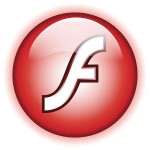 Seven months after the VideoLAN team released version 2.1.5 of their VLC player, we are treated to two new releases. There is a version 2.1.6 bugfix release, but that is not really getting attention. Everybody’s eyes are focused on the brand new 2.2.0 release. For the first time in the history of the VideoLAN Client, nowadays better known as the VLC player, there are simultaneous releases for most Operating Systems, including Android, iOS, Windows RT and Windows Phone. Of course there’s a release for Linux too (ok… and Windows) so I built you all some packages for Slackware (compatible with 14.1 and -current).
Seven months after the VideoLAN team released version 2.1.5 of their VLC player, we are treated to two new releases. There is a version 2.1.6 bugfix release, but that is not really getting attention. Everybody’s eyes are focused on the brand new 2.2.0 release. For the first time in the history of the VideoLAN Client, nowadays better known as the VLC player, there are simultaneous releases for most Operating Systems, including Android, iOS, Windows RT and Windows Phone. Of course there’s a release for Linux too (ok… and Windows) so I built you all some packages for Slackware (compatible with 14.1 and -current).
The 2.2.0 release has been (very) long in the making. With nothing really exciting going on for many months – at least not publicly – I spent my time on other things and left the VideoLAN developers to do what they do best: release good software when it’s ready. A commendable philosophy, obviously they have eyes on Slackware as the shining example of releasing when ready, not before 🙂
A month ago, I took some time to check out the ongoing development because the number of show-stopping bugs had almost gone down to zero. I refreshed many internal support libraries, polished the vlc.SlackBuild and tested a git version of the player. Looked good! Most of the open bugs and remaining things to be done were not relevant to Linux anyway. Therefore it took no time at all to build packages for the official 2.2.0 release once that was announced yesterday afternoon.
I had a busy saturday, so the blog post took a while, but those of you who check the repository’s RSS feeds or are using slackpkg+ will already have seen the new packages yesterday.
What’s new in 2.2.0 apart from cross-platform support? There’s enhancements all over the spectrum: video decoding, encoding, supported formats etc. Here are some of the highlights taken from the official release notes that are relevant to the Linux player:
- GPU 0-copy decoding-rendering for Linux using VDPAU
- Improved support for UltraHD codecs, H.265 and VP9
- Resume playback where you left off
- Subtitles download from the web, using OpenSubtitles
- Support for BD-Java menus and overlay in Blu-Ray
- Acceleration of VP9 and H.265/HEVC decoders
- Support for encoding in H.265, Opus and VP9
- Rewritten support for WMV, Ogg, MP4 and AVI, notably for seeking
But under the hood there’s a lot more going on than these buzzwords can do justice. The team have indeed delivered a tremendous job. considering that this is an all-volunteer project.
Where to find the new VLC packages:
Rsync access is offered by the mirror server: rsync://taper.alienbase.nl/mirrors/people/alien/restricted_slackbuilds/vlc/ .
For BluRay support, read a previous article for hints about the aacs keys that you’ll need.
Note that I only built packages for Slackware 14.1 & -current. I stopped creating packages for Slackware 14.0 and earlier because of the effort it takes to build 4 packages for every Slackware release. One remark: I compiled the packages on Slackware 14.1 which is the cause of one bug in the package if you use it on Slackware-current: the ProjectM visualisation plugin does not work because of a libGLEW library version error. I have not yet been able to find a fix for it, but the impact is fairly minor so I let it pass.
My usual warning about patents: versions that can not only DEcode but also ENcode mp3 and aac audio can be found in my alternative repository where I keep the packages containing code that might violate stupid US software patents.
Have fun! Eric
 Time for an update of Adobe’s Flash Player plugins folks! I uploaded Slackware packages for the version 32.0.0.114 of the flashplayer-plugin (NPAPI plugin for Mozilla based browsers) and the chromium-pepperflash-plugin (PPAPI plugin for Chromium based browsers) to my repository. This release does not address security issues and instead resolves feature and performance bugs.
Time for an update of Adobe’s Flash Player plugins folks! I uploaded Slackware packages for the version 32.0.0.114 of the flashplayer-plugin (NPAPI plugin for Mozilla based browsers) and the chromium-pepperflash-plugin (PPAPI plugin for Chromium based browsers) to my repository. This release does not address security issues and instead resolves feature and performance bugs.

Recent comments